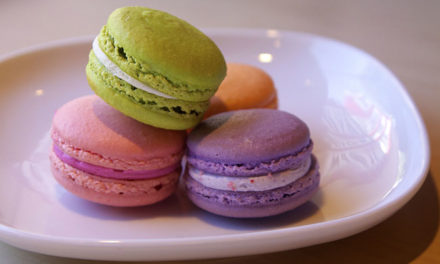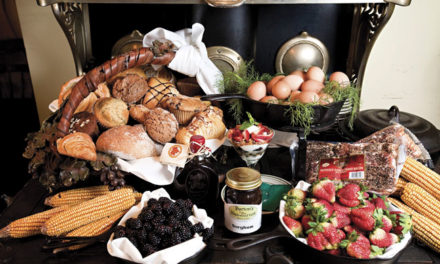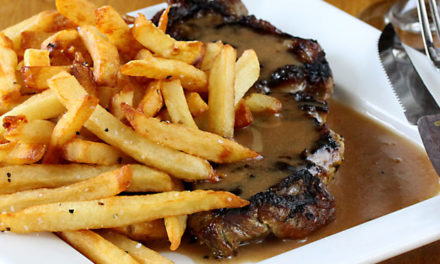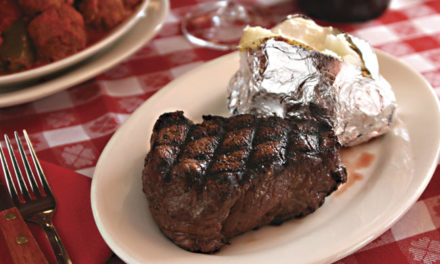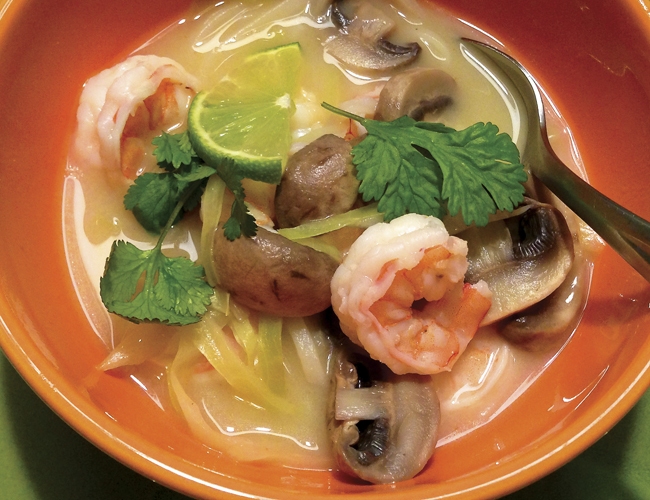
Thai soup. Photo by Christine Barbour
BY CHRISTINE BARBOUR
Honestly—some foods smell so bad you can’t believe that people let them anywhere near their mouths, which are, after all, so inconveniently located right under their highly sensitive noses.
I am thinking lutefisk here, people. That is perfectly good fish, soaked in lye until it turns into odiferous fish jelly. And cheeses. Really, the range of olfactorily offensive cheeses is so broad that there is actually a genre of cheese that its devotees (and I am one) call, affectionately, “stinky cheese.” And though it doesn’t come everyone’s way here in North America, the durian is a fruit that can blast you back for miles with its eau d’rotten garbage. And Korean kimchi—PU!—although what do you expect of a salad that was traditionally buried for days to get it to taste just right?
And yet, people eat these things; they even love to eat them. How can that be?
What got me thinking about stinky food—and the perverse fact that often, if you can get past the nose factor, it turns out to be delicious—was a recent evening I spent cooking Thai food. I made a lovely soup, rich with coconut milk and tangy with lime and cilantro, spiced with chilies and laden with plump shrimp and rice noodles. Also a roasted eggplant salad, lime again, chilies, ginger, and sugar. Cucumber salad, sliced thin, with garlic, shallots, fresh mint, and chopped peanuts. Lovely ingredients all, but really somehow pedestrian without the addition of that sine qua non of Thai food—fish sauce.
Yum, fish sauce. If you have cooked with it, you know it smells not unlike the fish emulsion you may have used to fertilize your garden. It is pretty much what it sounds like—not a sauce to put on fish, but a sauce made from fish, fish salted and left to ferment in its own juice. Really, what could be nicer?
The first whiff when you open the bottle is, well, let’s just say pungent. And yet, when you add it to food, it elevates all the flavors, adding a touch of umami—that oh-so-exquisite but hard-to-describe fifth taste (along with sweet, salty, sour, and bitter) that completes the palate.
It was fish sauce that gave the Thai soup savory complexity, that raised the roasted eggplant to addictive heights, and that took a cucumber salad halfway around the world.
What almost all these stinky foods have in common (all of them except the durian, anyway, and maybe the lutefisk, and I am not sure who to blame or credit for that) is fermentation, a chemical process by which the sugars in food are transformed into alcohol, acid, or gas. Sometimes fermentation is clearly a good thing—think wine, beer, bread, and yogurt! Sometimes it’s not, as anyone who hasn’t taken the garbage out in a timely way can attest.
But for fermented foods, it’s all a matter of finding what Sandor Katz, author of The Art of Fermentation, calls, “The flavorful space between fresh and rotten.”
Delightful. I think we’ll have Thai food again tonight.
To read more by Christine Barbour, visit her blog, My Plate or Yours? (July 23 note: Christine is currently blogging about her experiences while traveling in Europe.)



